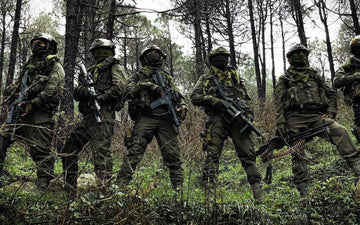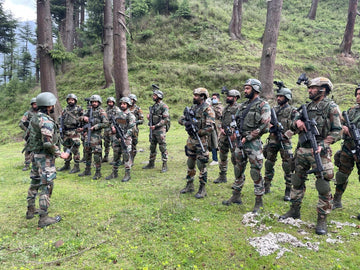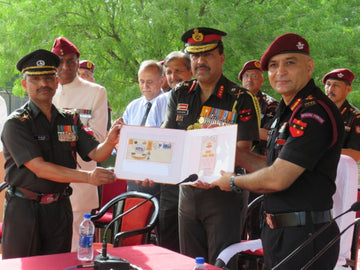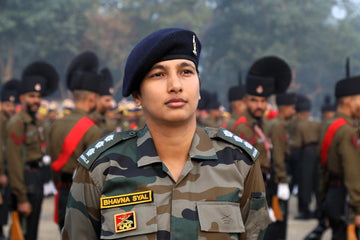To become a Commanding Officer (CO) in the Indian Army is an aspiration that resonates deeply with many young men and women across the nation. This prestigious role embodies leadership, discipline, and commitment, making it a cornerstone of military integrity and operational excellence. As India's armed forces face multilayered challenges in an ever-evolving geopolitical landscape, the need for capable and resilient officers has never been more critical. This comprehensive guide delves into the multifaceted process of becoming a CO in the Indian Army, exploring essential service requirements, promotion criteria, leadership experiences, and the educational pathways significant to this coveted position.
Historical Context
The role of a Commanding Officer in the Indian Army has evolved significantly since India’s independence in 1947. Initially, the focus was on expanding the forces and establishing a robust command structure. Over the decades, cultural shifts, technological advancements, and changing warfare dynamics have transformed the expectations and responsibilities of a CO.
From the early days of conventional warfare to the complexities of counter-insurgency operations and peacekeeping missions, the Indian Army has continuously adapted its training and command structure. Today, a CO is not just a military leader but also a strategist, a mentor, and a vital link between troops and higher command. Ensuring operational readiness while fostering a sense of unity and morale among soldiers are fundamental to the CO’s role, exemplifying the shift from a purely hierarchical military structure to a more agile and responsive command approach.
Service Duration and Rank Requirements
The journey to becoming a Commanding Officer typically spans at least 15 years of commissioned service, culminating in the rank of Colonel, which is often associated with the CO position:
-
Career Progression:
- Officers enter the army as Lieutenants and must achieve rank promotions through consistent performance and adherence to military standards.
- Rank progression generally follows this timeline:
- Captain: After 2 years of service.
- Major: After 6 years of service.
- Lieutenant Colonel: After 13 years of service.
- Colonel: Typically requires 20 to 25 years of service, with officers often needing to have spent a minimum of 2 years as a Major or in a more senior rank.
Detailed Rank Progression Requirements
- Lieutenant: Entry-level position after training at the Indian Military Academy (IMA) or equivalent.
- Captain: Requires an evaluation of performance and completion of mandatory duration.
- Major: At this juncture, officers engage in various operational roles, gaining valuable experience and demonstrating leadership potential.
- Lieutenant Colonel: Requires proven capability in command and operational planning.
- Colonel: Achieving this rank usually signifies readiness for the CO position, with rigorous evaluations of leadership performance and operational success.
Promotion Criteria
Promotion criteria within the Indian Army can be broadly categorized into two sections: those for ranks up to Lieutenant Colonel and those for ranks above Colonel.
-
Promotions Up to Lieutenant Colonel:
- Primarily based on seniority and time-scale promotions, where officers advance as they complete the requisite service duration.
- Required examinations and fitness tests further validate an officer's readiness for higher responsibilities.
-
Promotions to Colonel and Above:
- These promotions are more competitive and are based on a combination of merit, seniority, and selection processes.
- Evaluations comprise assessments of operational effectiveness, decision-making abilities, and leadership skills, ensuring only the most competent officers rise to these ranks.
Key Selection Factors
-
Merit-Based Assessments:
- Rigorous evaluations ensure that promotions are awarded to officers who exhibit exceptional skills and leadership qualities.
-
Fitness and Medical Requirements:
- Officers must pass stringent fitness tests, ensuring their physical readiness to lead.
-
Experience Requirements:
- Commanding roles held during previous ranks are critical in determining an officer's suitability for promotion.
Leadership and Command Experience
A pivotal aspect of preparing for the role of a Commanding Officer involves accruing extensive leadership and command experience. Serving in various capacities, such as a platoon commander or a company commander, is essential for developing the skills necessary for higher command.
Leadership Skills
- Inspiration and Motivation: Effective COs possess the ability to inspire troops, driving team morale and fostering a cohesive unit.
- Discipline and Cohesion: Establishing a disciplined environment is paramount; COs must cultivate unity of purpose among soldiers.
- Crisis Management: The ability to make informed decisions under pressure is vital, especially in high-stakes situations, where lives may be at immediate risk.
Training for Command Roles
Training modules within the Indian Army emphasize real-world scenarios, enabling officers to develop critical leadership skills through:
- Tactical Exercises: Engaging in simulations that replicate combat situations.
- Collaborative Problem Solving: Encouraging teamwork and joint decision-making among officers.
- Mentorship Programs: Facilitating experienced officers to mentor those in junior ranks, thus fostering a culture of continuous growth and leadership excellence.
Physical Fitness
Physical fitness is foundational to the ethos of the Indian Army. A CO must maintain peak physical standards, which are rigorously tested through:
- Medical Evaluations: Examining overall health and fitness level.
- Fitness Tests: Routine assessments including running, obstacle courses, and strength training, ensuring officers are combat-ready.
Importance of Maintaining Fitness
- Operational Readiness: A physically fit officer is better equipped to lead troops during demanding field operations.
- Role Modeling: Officers set examples for their soldiers, emphasizing the importance of physical fitness.
Educational and Examination Requirements
As officers advance through the ranks, they must also meet specific educational and examination requirements vital for their progression:
-
Promotion Examinations:
- For instance, the Part B exam is mandatory for officers aiming to become Majors, while the Part D exam is critical for those seeking the rank of Lieutenant Colonel.
Continuous Learning
- Professional Development Courses: Participation in various courses that enhance tactical knowledge and leadership skills is often necessary.
- Field Exercises: Engaging in simulation exercises to apply theoretical knowledge in practical scenarios.
Selection and Merit
While seniority dominates promotion pathways up to Lieutenant Colonel, the selection for higher ranks is merit-based, allowing only the most accomplished officers to ascend. This competitive selection process is designed to foster a culture of performance excellence:
-
Merit-Based Evaluations:
- Regular assessments and feedback mechanisms ensure officers are continually evaluated, promoting accountability and motivation.
-
Specialized Training Opportunities:
- Participation in specialized courses designed for future leaders is often a prerequisite for higher command roles.
Challenges and Solutions
Pursuing the role of a CO in the Indian Army is fraught with challenges that aspiring officers must navigate:
Major Challenges
- Intense Competition: The competitive nature of promotional assessments can place significant pressure on officers.
- Physical and Mental Demands: The rigorous fitness standards and psychological resilience required for leadership roles can be taxing.
Proposed Solutions
- Structured Support Systems: Establishing mentorship programs that provide emotional and professional support can help candidates cope with challenges.
- Regular Feedback Mechanisms: Implementing continuous assessment and feedback can guide officers in improving their performance and readiness.
Future Trends and Predictions
As the Indian Army confronts modern warfare challenges, the changing landscape will affect the qualifications and roles of Commanding Officers:
- Incorporation of Technology: Future COs may require a foundational understanding of technology, including cyber warfare and advanced communication systems, which will be essential in future operations.
- Emphasis on Soft Skills: Attributes such as emotional intelligence, cultural awareness, and negotiation skills are likely to gain prominence in leadership training programs.
Conclusion
Becoming a Commanding Officer in the Indian Army is a journey marked by dedication, leadership, skill development, and a commitment to excellence. Aspiring officers must be prepared to navigate a structured yet challenging path characterized by rigorous service demands, continuous learning, and the cultivation of leadership acumen.
The path to becoming a CO is more than a career choice—it is a calling that demands integrity, resilience, and an unwavering commitment to serving the nation. As candidates embark on this journey, they will not only shape their future but also contribute significantly to the defense posture and operational readiness of one of the world's largest armies. By equipping themselves with the essential skills, knowledge, and experience, these future leaders will be ready to meet the challenges of a complex and critical role in the Indian Army's enduring legacy.





